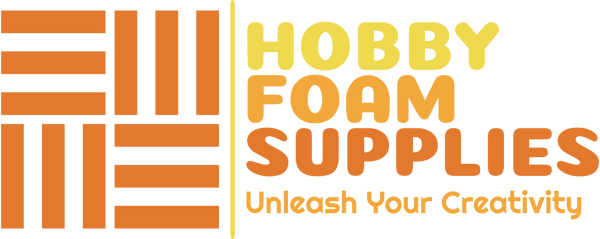Here’s the list of glues and adhesives suitable for Styrofoam crafts, with pros and cons for each:
1. UHU Por
-
Pros:
- Specifically designed for foam materials.
- Flexible and strong bond without melting.
- Dries clear.
-
Cons:
- Limited availability in some regions.
- Slightly more expensive than regular craft glue.
2. Foam Safe CA Glue (Cyanoacrylate)
-
Pros:
- Very fast drying and provides a strong bond.
- Won’t melt or damage Styrofoam.
- Ideal for intricate or small parts.
-
Cons:
- Expensive compared to regular glues.
- Can be brittle after drying, limiting flexibility.
3. 3M Super 77 Spray Adhesive
-
Pros:
- Great for large surface areas.
- Quick-drying and strong bond.
- Bonds Styrofoam to a variety of materials (fabric, wood, etc.).
-
Cons:
- Requires ventilation due to fumes.
- Overspray can be hard to control.
4. Low-Temperature Hot Glue
-
Pros:
- Quick setting, ideal for fast projects.
- Works well on Styrofoam if used at low temperature.
- Readily available and inexpensive.
-
Cons:
- Can melt or deform Styrofoam if temperature is too high.
- Not ideal for large or heavy items due to lower bond strength.
5. PVA Glue (White Glue)
-
Pros:
- Readily available, affordable, and non-toxic.
- Dries clear and provides a good bond for lightweight projects.
- Safe for children and easy to clean up.
-
Cons:
- Takes a long time to dry.
- Not as strong as some other adhesives.
6. E6000 Craft Adhesive
-
Pros:
- Very strong and versatile adhesive.
- Provides a waterproof and flexible bond.
- Works on a wide range of materials.
-
Cons:
- Strong fumes; requires ventilation.
- Takes longer to set than fast-drying glues.
7. Aleene’s Tacky Glue
-
Pros:
- Thick consistency prevents drips and runs.
- Provides a strong hold for Styrofoam and other craft materials.
- Non-toxic and safe for children.
-
Cons:
- Longer drying time compared to hot glue or spray adhesives.
- Less effective on heavy or large projects.
8. Beacon Hold The Foam
-
Pros:
- Specifically formulated for Styrofoam.
- Provides an instant bond without melting the foam.
- Strong adhesion even for larger projects.
-
Cons:
- Availability can be an issue.
- May not bond well with non-porous surfaces.
9. Gorilla Glue (Foam Safe)
-
Pros:
- Expands as it dries, filling small gaps and ensuring a strong bond.
- Very durable and waterproof.
- Bonds Styrofoam to other materials effectively.
-
Cons:
- The expanding property can be hard to control and may cause overflow.
- Takes longer to dry and can be messy.
10. Hot Glue (Low or High-Temperature)
-
Pros:
- Ideal for quick assembly.
- Provides a strong bond when used carefully.
- Easily available and affordable.
-
Cons:
- High temperatures can melt Styrofoam.
- Limited flexibility once set.
11. Mod Podge
-
Pros:
- Works as both an adhesive and a sealer.
- Dries clear and is easy to apply.
- Non-toxic and water-based, making it child-safe.
-
Cons:
- Not as strong as other adhesives.
- Takes time to dry, and may not be suitable for heavy-duty bonding.
This guide should help you choose the best adhesive based on your project needs!

